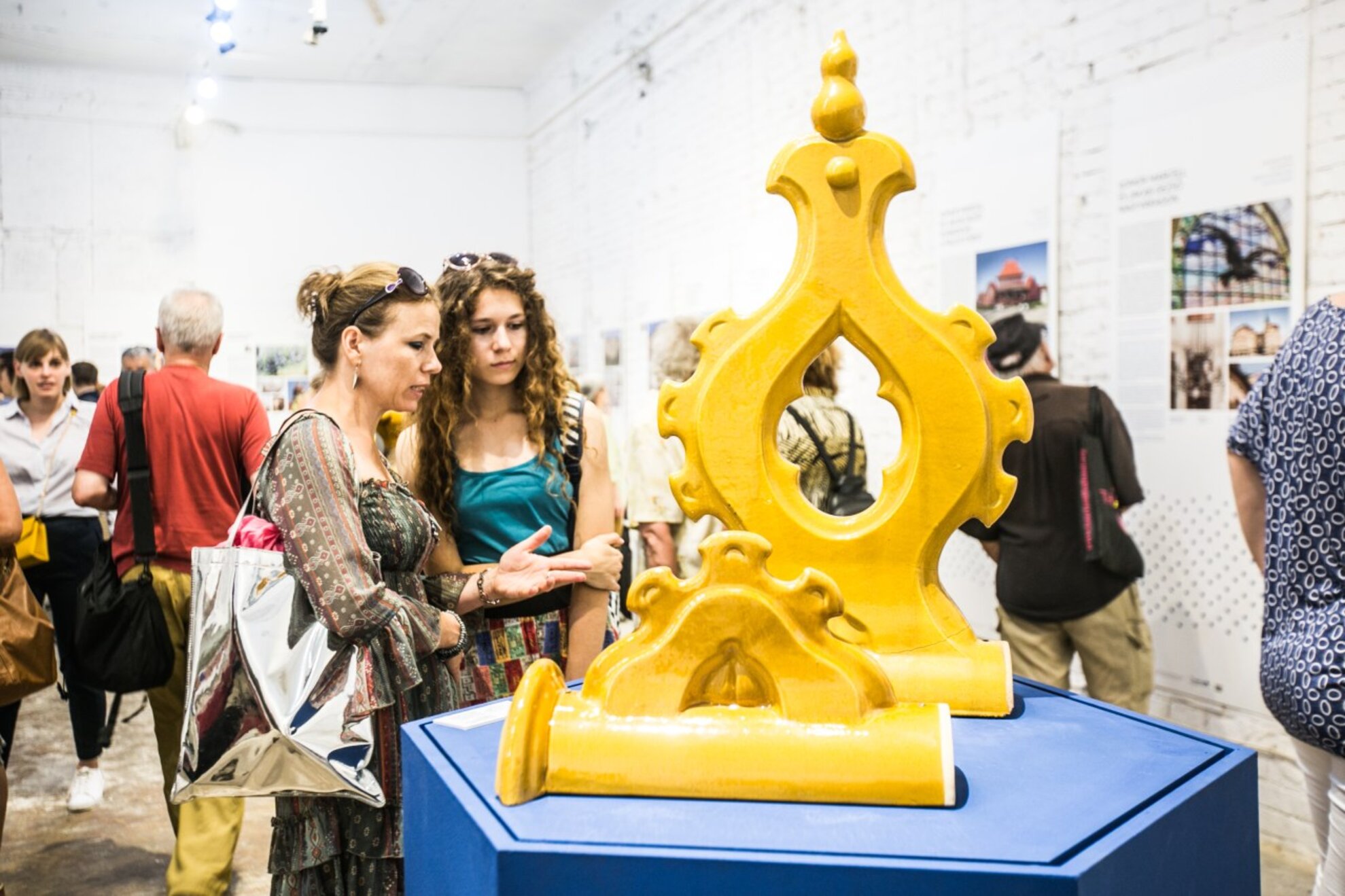Towards the end of the 19th century, several artists, architects and thinkers began to feel that the academic framework and historicism that used to dominate the cultural scene had become meaningless and outdated, and started looking for fresh, modern, revolutionary ways to express the problems, desires and pursuits of their society.

The forerunners of the new movement already appeared in England in the middle of the 19th century, but the first unconventional fine art and applied art objects and buildings only came into being towards the end of the century – the style had a different name in many parts of the world, with different motifs and shapes. This new, revolutionary art popular in Brussels, München and Vienna spread swiftly across Europe and around the world. As art historian Júlia Katona put it in her exhibition-opening speech, Art Nouveau’s quick success was due to an approachable and fresh visual style, and the fact that it set architects and viewers free of the intellectual limitations prevalent for nearly 2000 years.

On display at FUGA, the common exhibition of the member cities of the Interreg Danube Transnational Programme (Belgrade, Vienna, Budapest, Bucharest, Ljubljana, Oradea, Subotica, Szeged, Sofia and Zagreb) presents rich and exciting material. It makes you want to visit and marvel at these breathtaking buildings immediately.

World Art Nouveau Day, started in 2013 as a Hungarian initiative and held annually since then, is going to be special in 2018, with several cities and countries of the Danube region also joining in. The event used to take place on June 10th – on the anniversary of the death of renowned architects Ödön Lechner and Antoni Gaudí – but this year it’s going to be a two-day event series with Art Nouveau city walks, guided exhibition tours and family-friendly activities. 2018 also marks the centennial of Otto Wagner’s death, and the 150th anniversary of the birth of Marcell Komor, famous architects of the era.
Curator Eszter Baldavári of the Hungarian Museum of Architecture guides us through the exhibition that comprises three sections – the first one presents the history of this unique art style in Vienna and the career of Otto Wagner, whose buildings are perfect examples of the transition from historicism to Art Nouveau. In the pictures displayed you can see the unconventional Majolikahaus (which used to appal the Austrians of the period), the station buildings of the Vienna city railway and the Austrian Postal Savings Bank.

Wagner had a great influence on the architecture of the entire Danube region due to his work in the field of architectural education and theory. It’s interesting to see how the Art Nouveau traits in Vienna appear in the lesser known edifices in Slovenia, Croatia, and Bulgaria too – such as Slovenian architects Max Fabiani’s and Ciril Metod Koch’s buildings in Ljubljana.
The second part of the exhibition presents the work of renowned Hungarian architect Ödön Lechner and his followers. His childhood drawings, old photographs, a scale model of the Museum of Applied Arts – his first significant design that made him famous nationwide – and original Zsolnay tiles from the building are on display.


The exhibition also features the work of Marcell Komor – one of Ödön Lechner’s followers – whose constructions designed together with Dezső Jakab are found in several cities of the former Austro-Hungarian Empire. They are the masterminds behind the recently renovated Synagogue and the Town Hall in Subotica, the Black Eagle Palace in Oradea, and the breathtaking Palace of Culture in Neumarkt Am Mieresch (Targu Mures), which is a gorgeous example of European Art Nouveau.


The third section showcases the Art Nouveau of the region. It tells us a lot about the common traits and motifs and how this popular art style in France, Austria, and Germany (called “Jugendstil” there) affected the eastern part of Europe. It’s exciting to see how the building of the Central Mineral Baths in Sofia blends architectural traits from different parts of the world– a façade similar to Budapest’s Széchenyi Baths, the structure of Orthodox churches and the ornamental art motifs of Byzantium– or how architect Branko Tanazević’s constructions in Serbia document the birth of Moravian Art Nouveau.

The exhibition poses the question whether it is still possible to show viewers something new about Art Nouveau. This material proves that it is indeed, and demonstrates that this style of art is so colourful and diverse in each country that it always has something to offer.

Although the material on display does not present a comprehensive picture of all the edifices built in this style – its intended purpose was to show only renovated ones – it shows a common drive and international cooperation for preserving these beautiful landmarks of Art Nouveau so that they may be here for a long time, for many generations to come.




